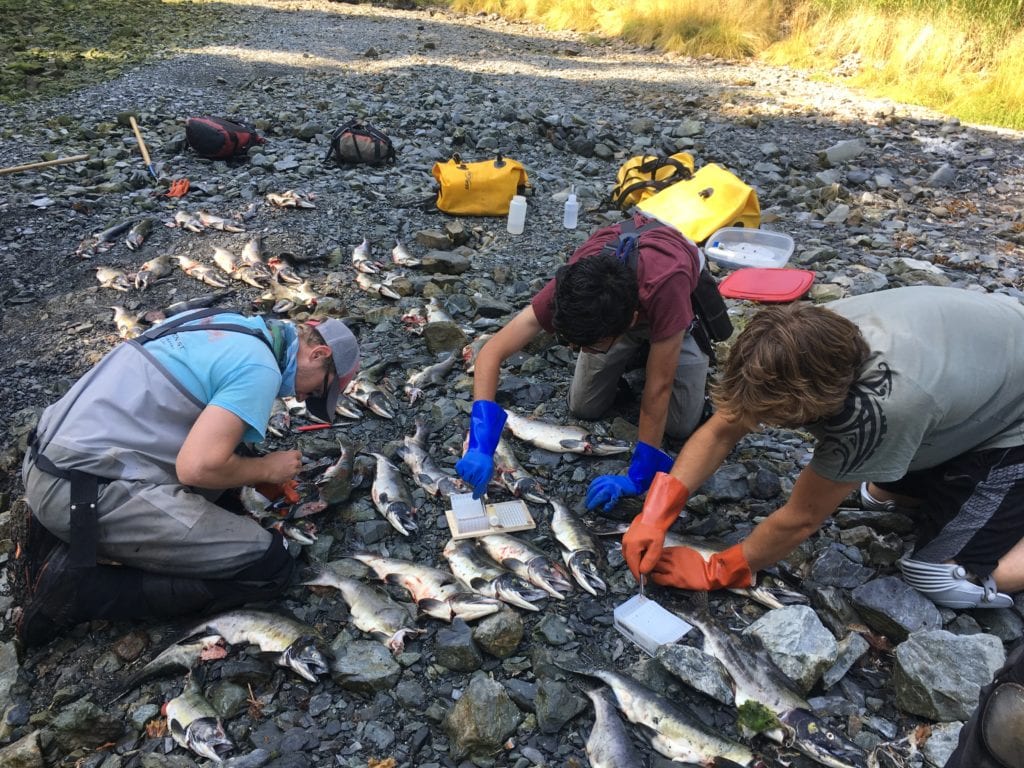
By Arissa Pearson
For The Cordova Times
December 2019 brought news that the Alaska Hatchery Research Program Science Panel decided to extend the Hatchery-Wild field project for another year. The field work began in 2013 with crews sampling salmon from five streams in western Prince William Sound. During last year’s unusually dry field season, crews surveyed three streams: Stockdale, Gilmour and Hogan. Dr. Pete Rand, the lead researcher for the AHRP field component, says crews will focus on Paddy and Erb creeks, located off Dangerous Passage during the upcoming 2020 field season.
The field crew will consist of one crew lead and two techs who will set up camp near the mouth of Paddy Creek for the summer. Crew members will walk the streams in search of dead salmon and remove their otoliths, or ear bones, as well as take a piece of heart tissue. These samples are then shipped to the Alaska Department of Fish and Game Gene Conservation Lab where analysis is done to compare relative reproductive success across different salmon family lineages, each with unique combinations of wild and hatchery origin parents.
It has recently been established that fish that originate in hatcheries and return as adults to streams are capable of successfully reproducing in the wild. Analyses now being conducted by ADF&G are determining if there are differences in fitness, or survival, in pink salmon produced from pairings of salmon that are of different origin. These results will help us understand if the presence of hatchery-origin pink salmon in streams could be affecting wild populations. You can find an overview and additional information on the project here adfg.alaska.gov/index.cfm?adfg=fishingHatcheriesResearch.main.




